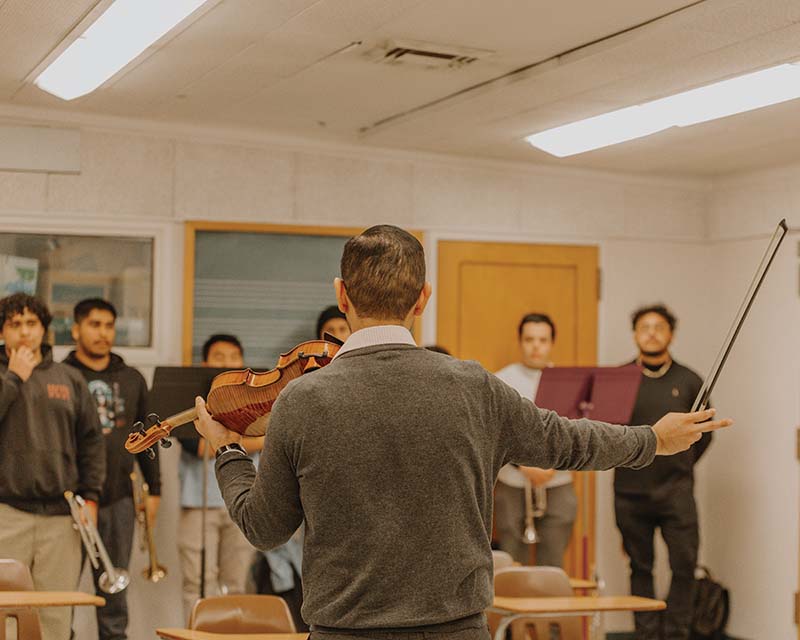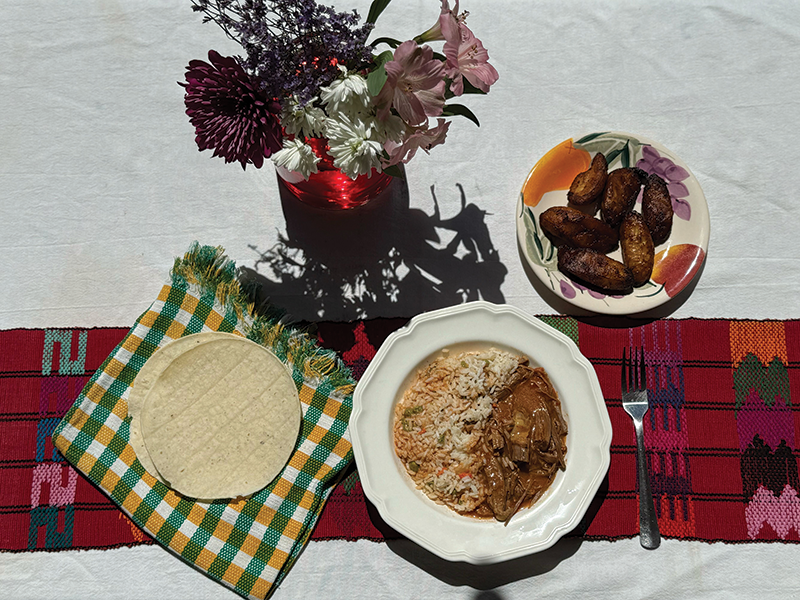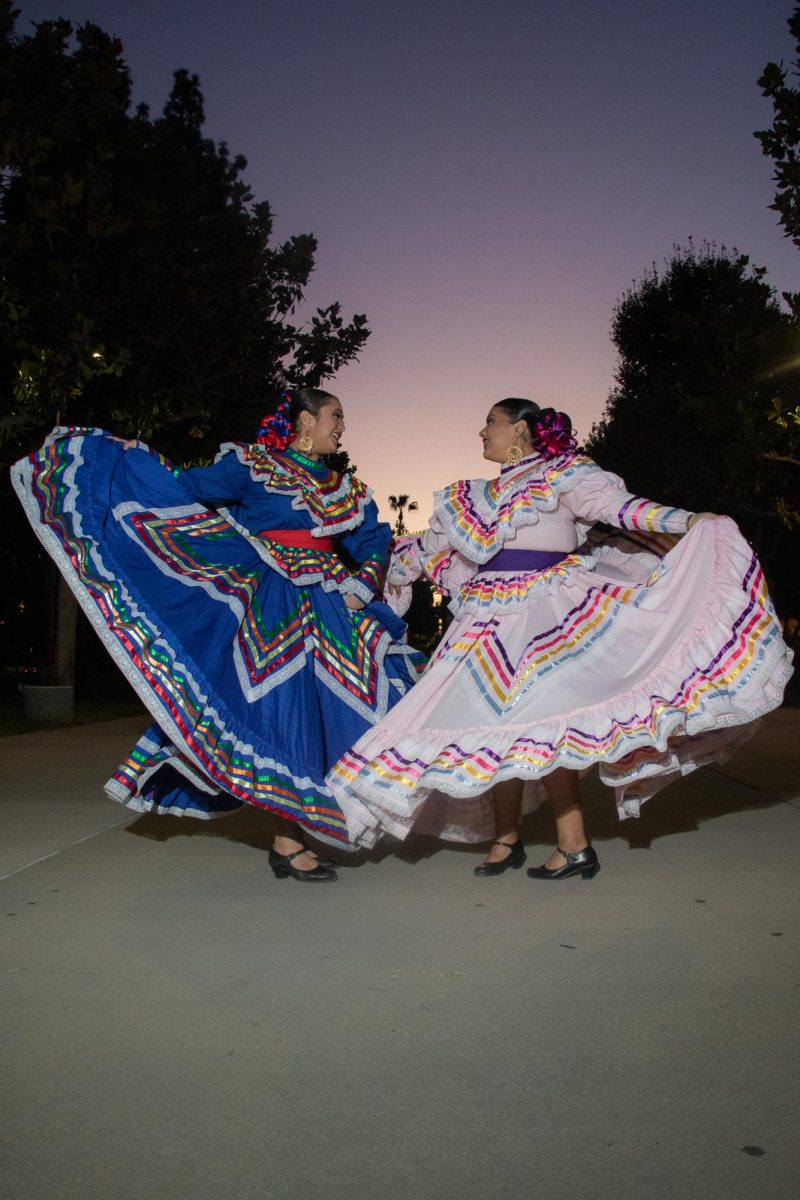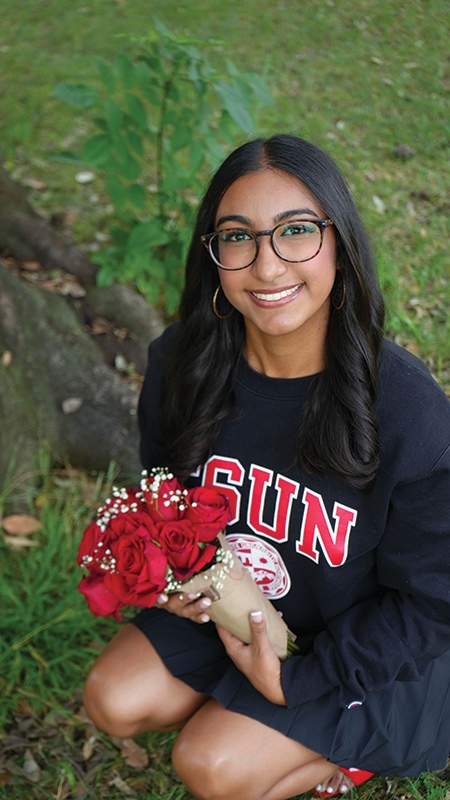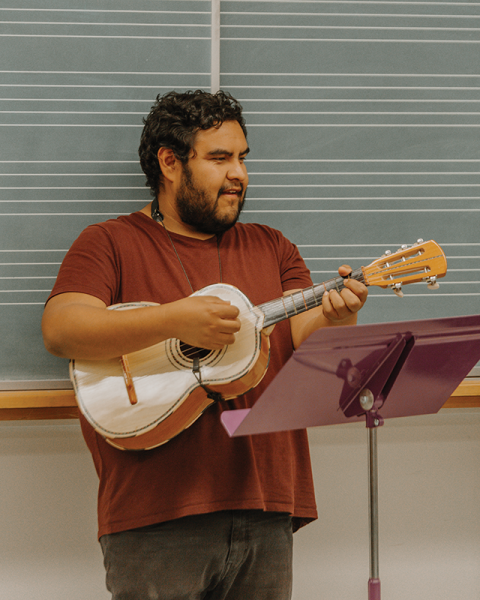
Music brings people together, especially when it is connected to culture. In mariachi music, the sound of instruments harmonizing with vocalists singing a song has a way of telling a story like nothing else can.
CSUN offers a class where students can learn about mariachi, which has historically been an important part of Mexican culture, and where those from the genre’s country of origin can connect with their heritage.
The class, taught by mariachi musician Carlos Samaniego, began during the COVID-19 pandemic when people were just starting to return to campus. It was initially held outside, which was a challenge in the heat of August. Only seven students were registered at the time, but that number has since grown to 22.
Samaniego said that a rewarding part of teaching the class is seeing the growth of students who take the challenge of learning to play a new instrument they’ve never played before, like the guitarron, a six-string acoustic bass. “At first, I thought that would be a difficult obstacle to overcome, and it does have its difficulties, don’t get me wrong, but it’s also rewarding to see these students take on the challenge and take it seriously and want to be at the level of the other musicians,” Samaniego said.
Esteban Andrade, a violinist who joined the class when it first started in the fall of 2021, said that by joining, he learned a lot about his culture through the stories the music told. He also learned about the importance of what Samaniego calls “interpretation,” or following the lead of the vocalists depending on the notes they sing and how long they hold them.
“It’s not just about music,” Andrade said. “We call it ‘sabor.’ You need this flavor. You need this judgment to be able to follow not just your ‘armonías’ but your singer. Your singer is more important because that’s the person who gives it more flavor.”
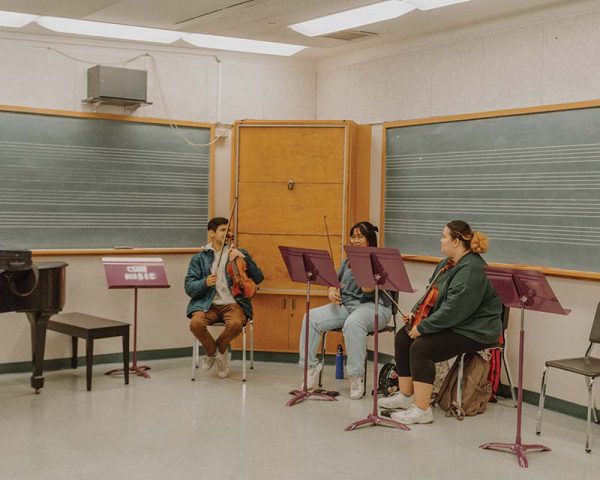
Samaniego makes a point to remind people to listen to each other as they are singing or playing an instrument, talking to specific individuals if they miss a beat. One of the main goals Samaniego has for the ensemble is to convey the cultural importance of mariachi to a city with as large a Latino population as Los Angeles. He does this by teaching the students about the cultural significance of each song they perform, so they can convey it to the audience.
“I want to give the impression that this music is our heritage here in greater Los Angeles, and it is something that we want to keep alive,” Samaniego said. “We don’t want it to die out.”
In addition to teaching, Samaniego also founded and directs Mariachi Arcoiris de Los Angeles, the world’s first ever LGBTQ+ mariachi ensemble. His purpose for creating the band was to create a safe space for LGBTQ+ mariachi players away from the “machismo” of other bands.
“My main goal was to create a group for the musicians,” Samaniego said. “Even though I say that I created the group to create a safe space for the musicians, I’ve been told, specifically by one doctoral student, that I created a safe space for our audiences as well. So that’s really cool. That’s amazing. I love that.”
